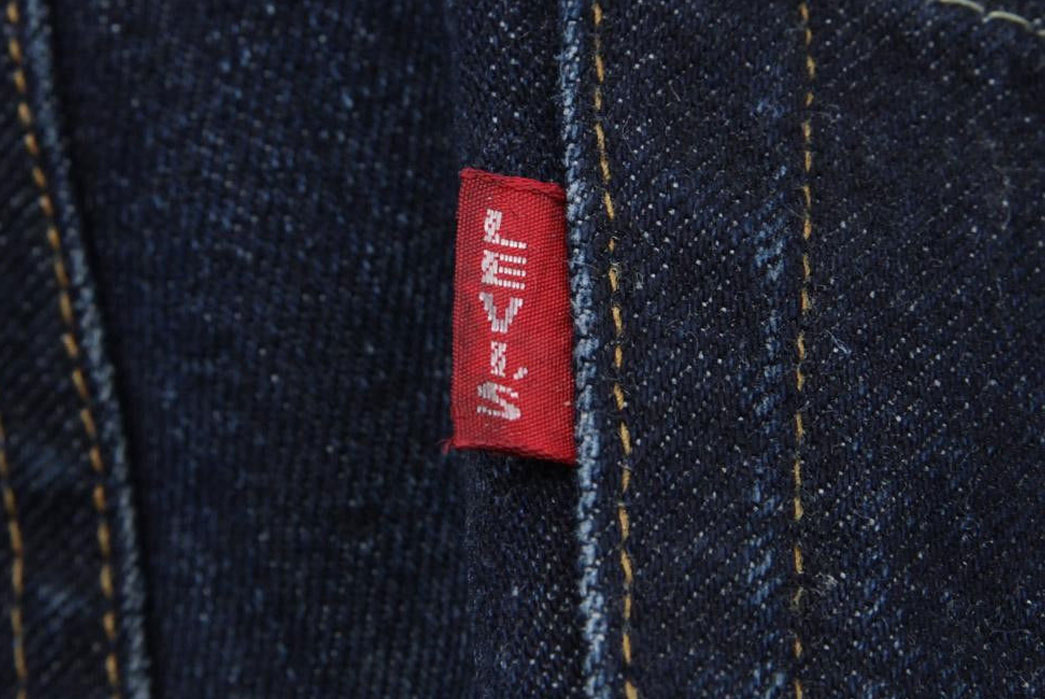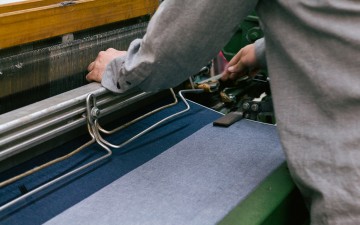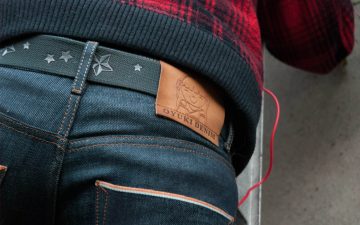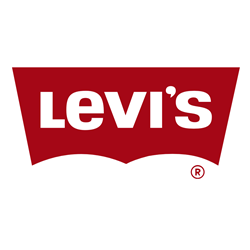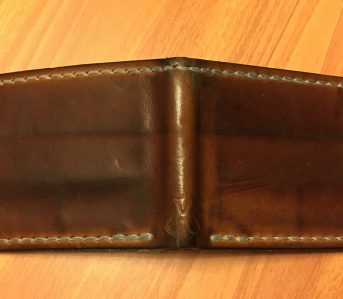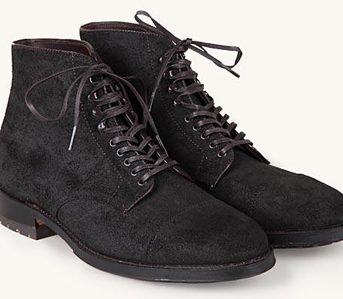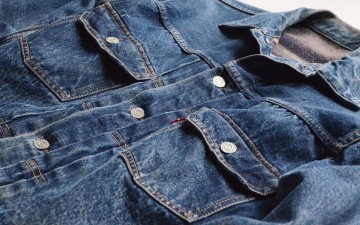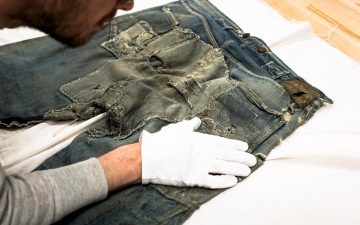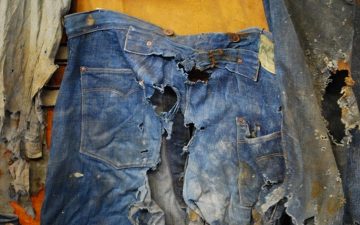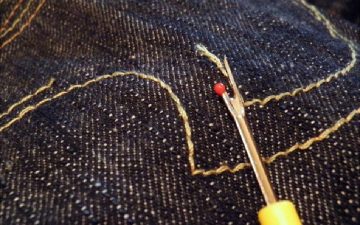It’s hard to imagine anything more ubiquitous than the jeans made by Levi Strauss & Co. As capitalist as Coca-Cola and as American as apple pie, Levi’s jeans have become a symbol of the United States’s cultural hegemony across the globe. But despite their dominance, the two horse brand was born of humble working origins and have miraculously stayed relevant and true to their identity into to the present day.
The recipe for its success may be as simple as what Levi’s archivist, Tracey Panek, calls “being in the right place at the right time.” From miner’s workwear in “the digs,” to the cool, distressed uniform of teenage rebels, and finally, to a high-fashion phenomenon, Levi’s jeans have become arguably the most famous item of clothing ever made.
Levi’s Philosophy and History
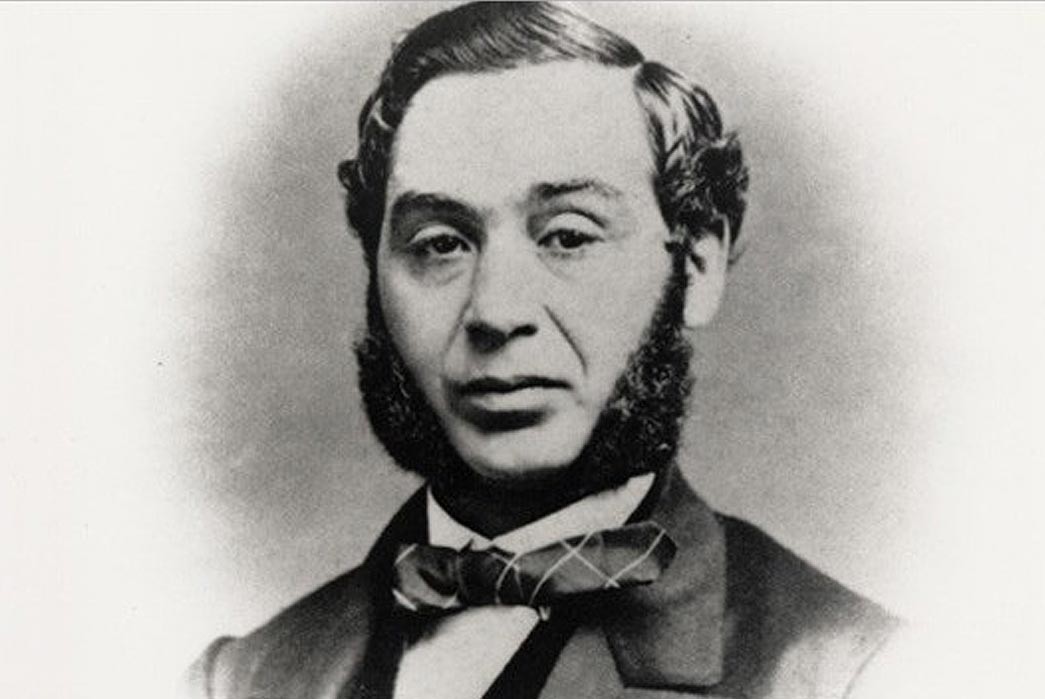
The legend, Levi Strauss.
No other brand is quite so clouded in legend and conjecture. In fact, much of Levi’s history was lost in the aftermath of the 1906 earthquake and fire in their hometown of San Francisco, but there’s still quite a bit that we know for certain.
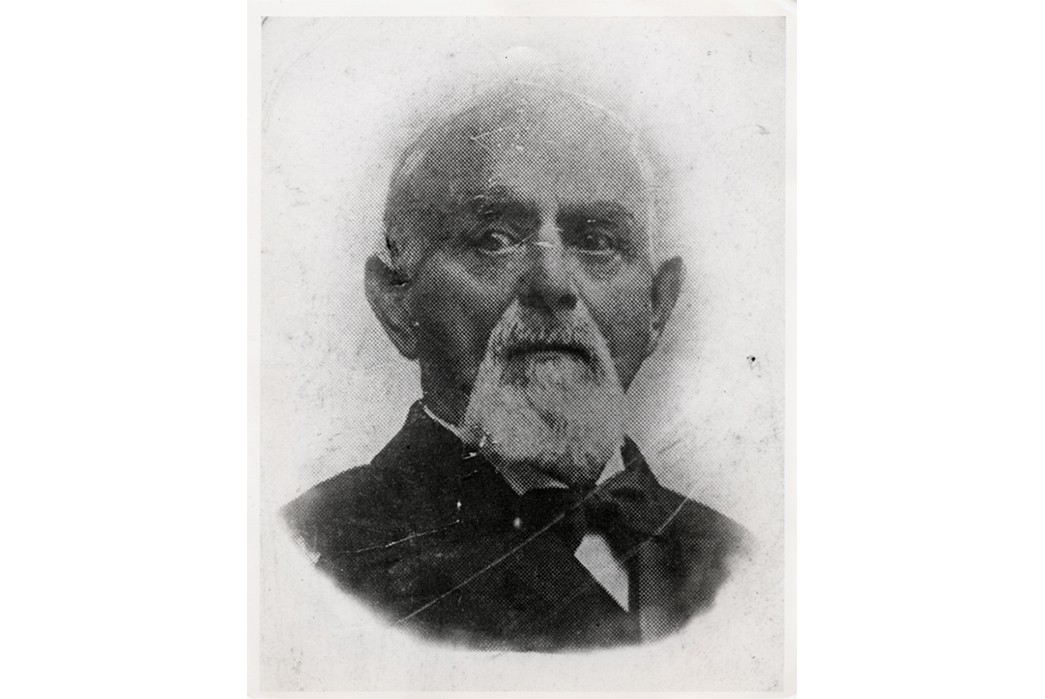
Jacob Davis. Image via Levi Strauss & Co.
We know that in 1872, Jacob Davis, a humble tailor in Reno, Nevada, wrote to a Bavarian dry goods merchant named Levi Strauss with a business proposal. Davis was a customer of Strauss, regularly buying rolls of denim and duck canvas, which he cut into hard-wearing clothes for miners in western Nevada. But the miners were constantly coming back for repairs: the fabric held up, but the stitching at stress points did not. Davis eventually took rivets from a saddle to reinforce his “waist overalls” where the stitching had failed and the iconic jean was born.
Unable to scrounge up the cash required to file for a patent and worried that other tailors might steal his idea, he appealed to Levi Strauss for help. Strauss saw promise in Davis’s invention and put up the money. The following year, in 1873, the XX riveted waist overall was created and their idea was patented, guaranteeing that Levi Strauss & Co. would have exclusive rights to the most durable workwear of the era. And Strauss, a savvy businessman, had access to the very best denim available, which happened to be a 9oz. fabric from Amoskeag Mills in New Hampshire that ultimately gave the garment its designation: XX.
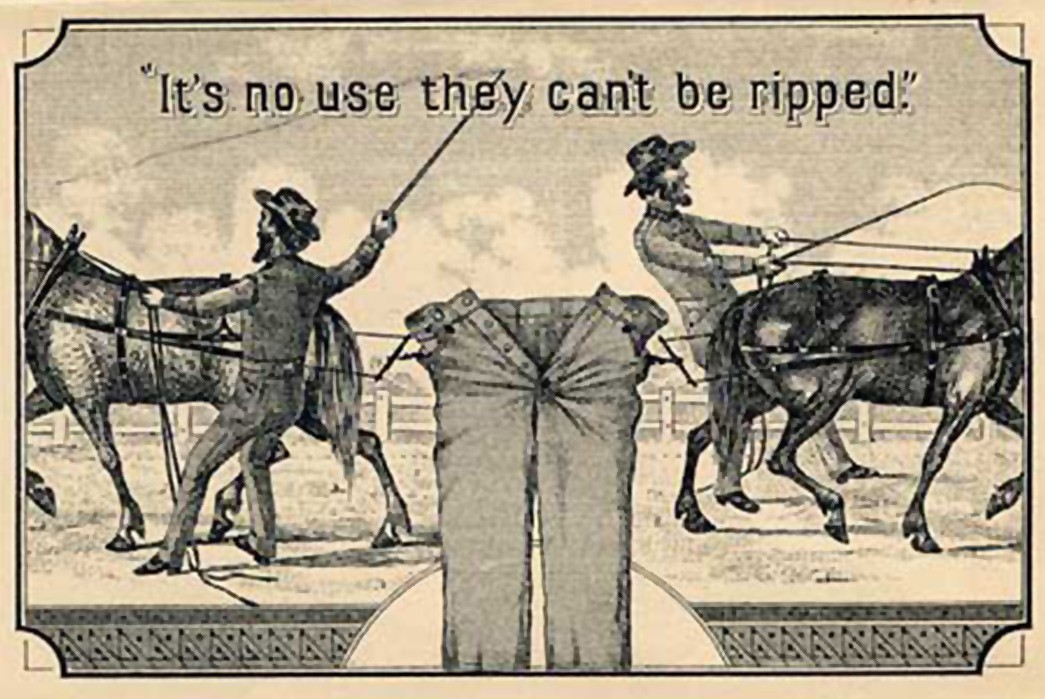
Two Horse Brand. Image via Levi Strauss & Co.
In 1886, the iconic Levi’s patch was created, which depicts two horses attempting (but failing) to rip a pair of jeans in half. Levi Strauss & Co. chose this clear imagery to entice even illiterate customers. So successful was the patch that, for many years, Levi Strauss & Co. was simply known as the “two-horse brand.” Four years later, in 1890, the waist overalls were given their permanent name: lot number 501.
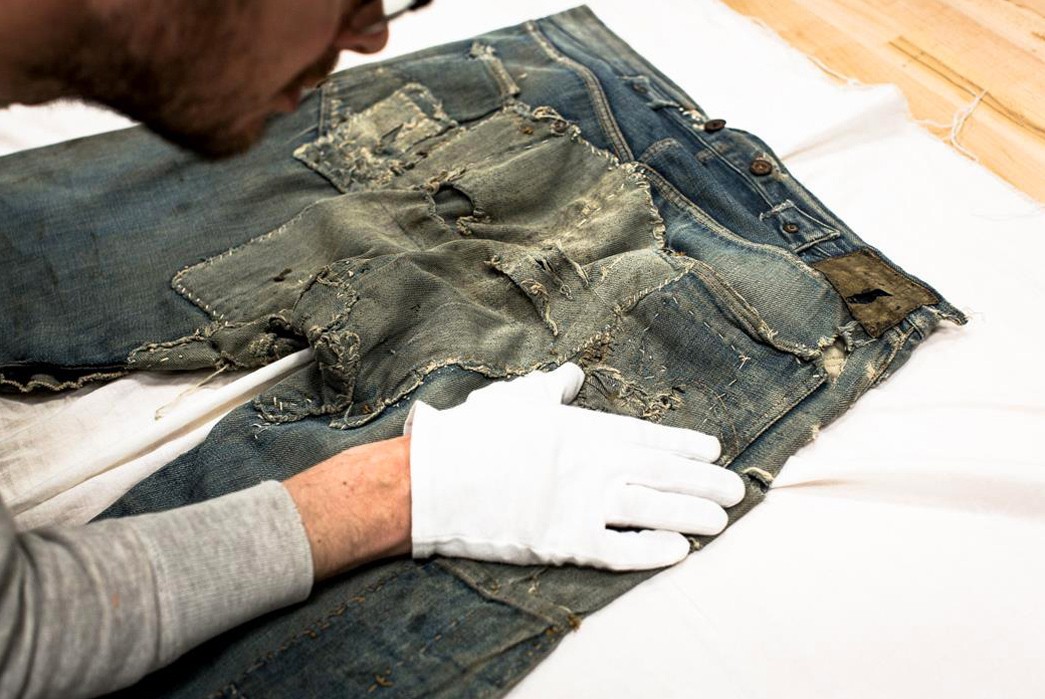
An original pair of 501s from the Levi’s archive in San Francisco. Image via Ryan Lindow.
The exact reason for this rebranding were lost in the 1906 fire, as was the decision to begin stitching an arcuate (those swoops) on the back pockets of the waist overalls, but an iconic look was created.
The twentieth century would bring many more innovations to the famous waist overalls. In 1915, Levi’s struck their “golden handshake” deal with Cone Mills, who would supply a heavier, unsanforized denim and put a red yarn in the selvedge edge to even further distinguish Levi’s products. Belt loops were added in 1922, and the classic red tab made its debut in 1936.
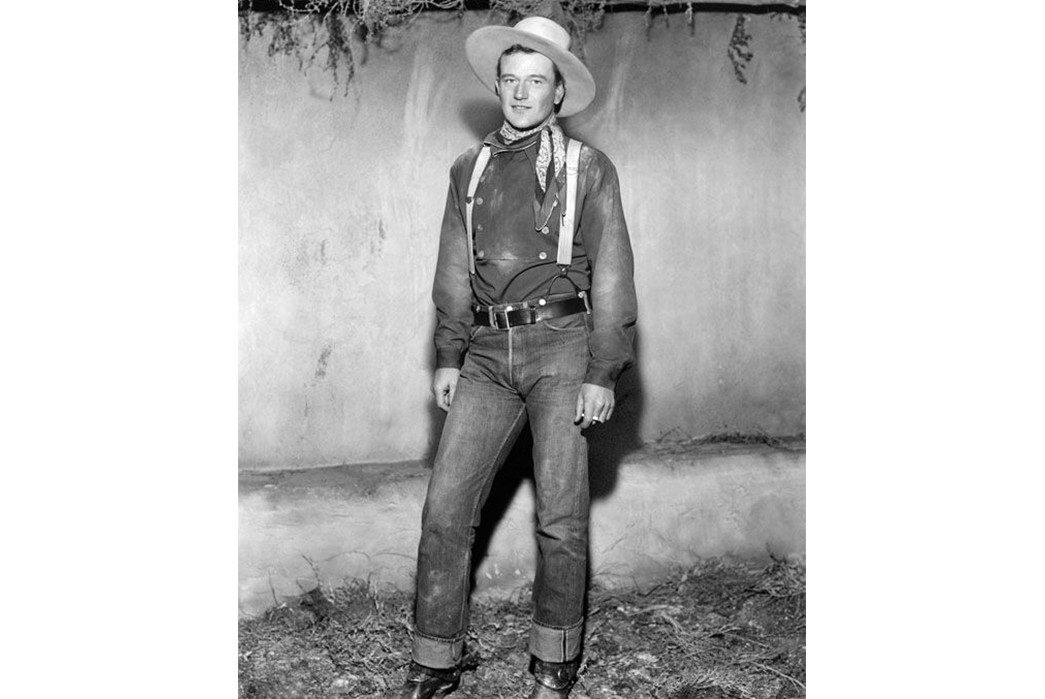
John Wayne in Stagecoach 1939 — before fabric rationing.
In the wake of the Great Depression, many cattle ranches converted from working ranches into “dude ranches,” which acted as vacation destinations for wealthy East Coast tourists. It was there that a range of fashionable men and women from outside the Wild West encountered Levi’s jeans for the first time, further elevating the brand’s profile.
But even as Levi’s ads graced the likes of the New York Times and Vogue Magazine, it wouldn’t be until after World War II that denim (and Levi’s) would go mainstream.
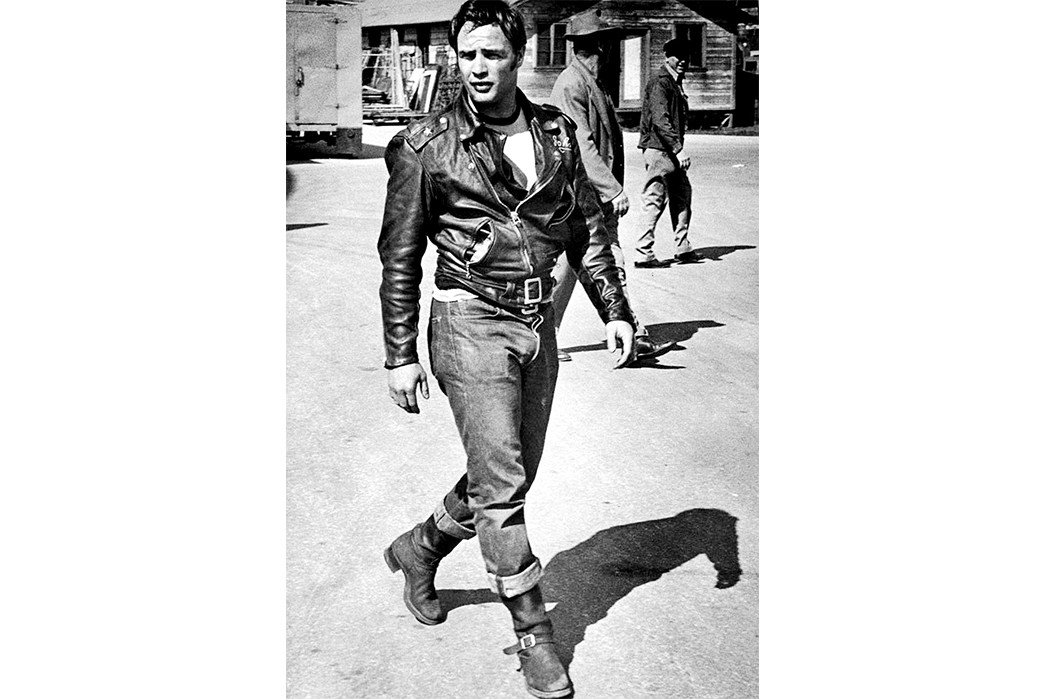
Marlon Brando in The Wild One, 1953.
Like many things, the modernization of the silhouette came out of wartime necessity. Fabric rationing during World War II led Levi’s to remove extraneous details—like the back cinch—and large cuffs and baggy fits were discouraged in order to save resources. The results of these restrictions are most apparent in the 1944 edition of the 501, which slimmed up the fit, dropped the rivets, and featured painted on arcuates to save thread.
Many of these changes lived on long after the end of WWII. The tight fit of the shrink-to-fit 501 was even somewhat scandalous in the deeply moralistic 1950s, and it didn’t help that a rising wave of crime and juvenile delinquency was being valorized onscreen by hunky actors like Marlon Brando and James Dean, who both wore jeans legendarily well (although between you and me, James Dean wore Lees).
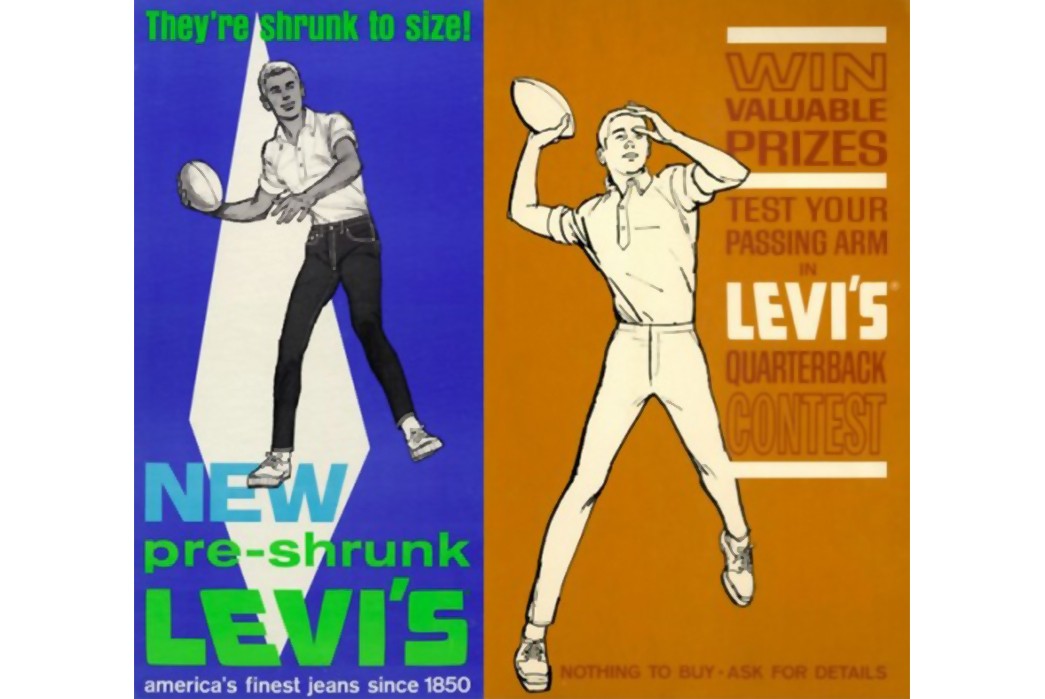
Preshrunk Levi’s
During this period, Levi’s was gaining more clout, but the corporation was in the middle of a culture war being fought by its customers. School principals banned jeans in schools, East Coast sales were suffering because people didn’t like the unsanforized (shrink-to-fit) denim, and companies like Lee and Wrangler were putting up stiff competition.
By 1967, however, Levi’s was the undisputed victor of the three big jeans companies. They pivoted out of Western wear market and directed their attention towards the fastest growing demographic in the country–teens. Levi’s embraced the hippies that embraced them with clever collaborations with counter-culture icons like Jefferson Airplane. The release of the 505 and “White” Levi’s was so successful that the brand even found a strong foothold on the East Coast for the first time. Finally, Levi’s was nationwide, and soon they would go global.
Levi’s Today
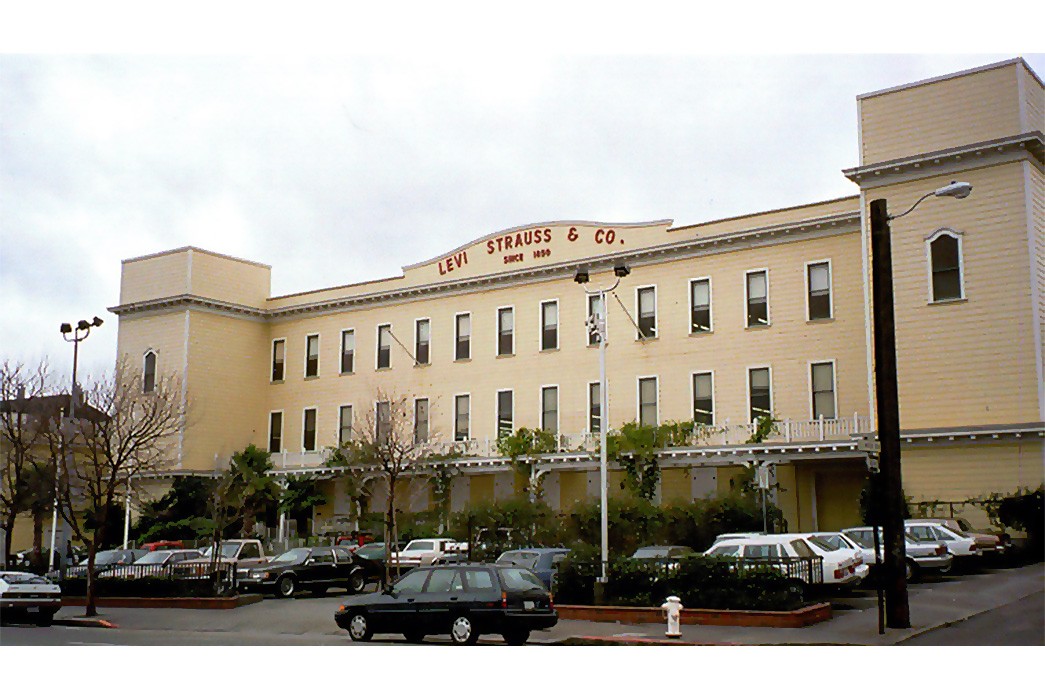
Levi’s iconic Valencia Street Factory, closed in 2002 as they shifted the majority of their production overseas. Image via SF Chronicle.
Levi’s is still privately owned. Levi Strauss had no sons, but he turned over the company to his nephews (surname Haas) upon his death in 1902. The company was run by members of the Haas family during the crucial postwar years, and much of the company’s success can be attributed to their direction.
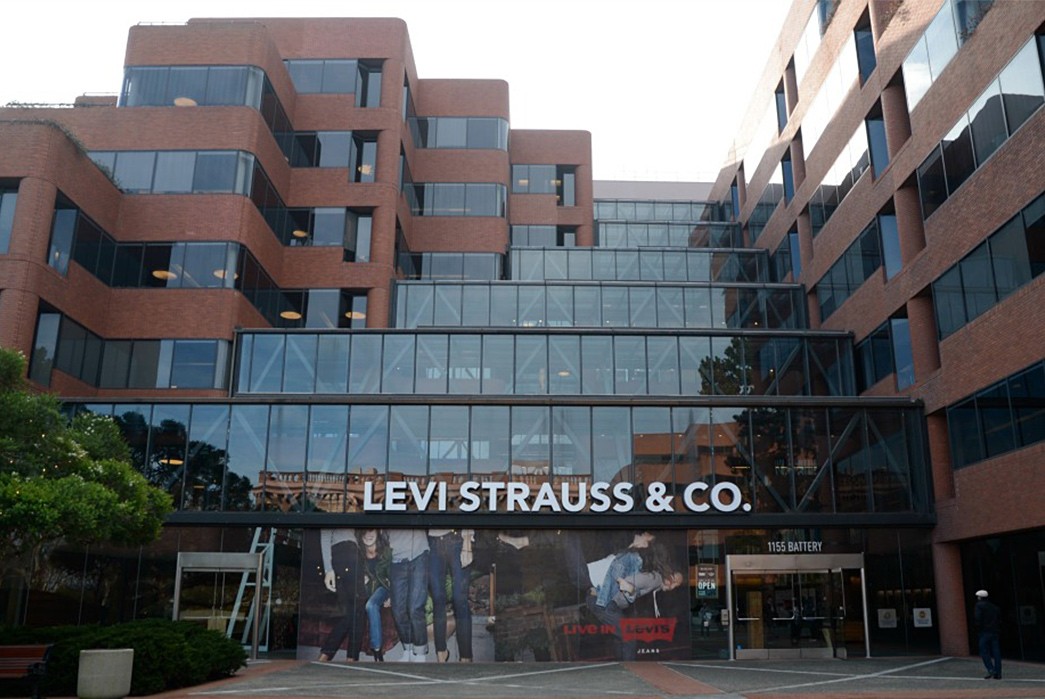
Levi’s Headquarters in San Francisco. Image via Nagle Energy.
Levi Strauss & Co. is still based in San Francisco, but very little of their total output is made in domestically. Their archival line, Levi’s Vintage Clothing, which recreates historical Levi’s garments, makes most of their rigid 501s and jackets here in the states, but the vast majority of Levi’s products are made in places like Turkey, Mexico, and Sri Lanka.
As of 2011, Levi Strauss & Co. has been committed (according to their website) to bettering the lives of apparel workers… but this could be the result of a 1991 scandal, in which the United States Department of Labor accused the company of forcing workers to toil in “slave-like conditions.” Regardless of their sordid past, the company is more transparent than most clothing companies of their size. And in recent years they have also made significant steps toward making their production process more sustainable with the launch of their Waterless campaign, which seeks to drastically reduce the amount of water needed to make a jean.
Key Characteristics
Levi’s has produced tens of thousands of different products over their nearly 150 years in business, but the vast majority of which have three key features.
The Red Tab
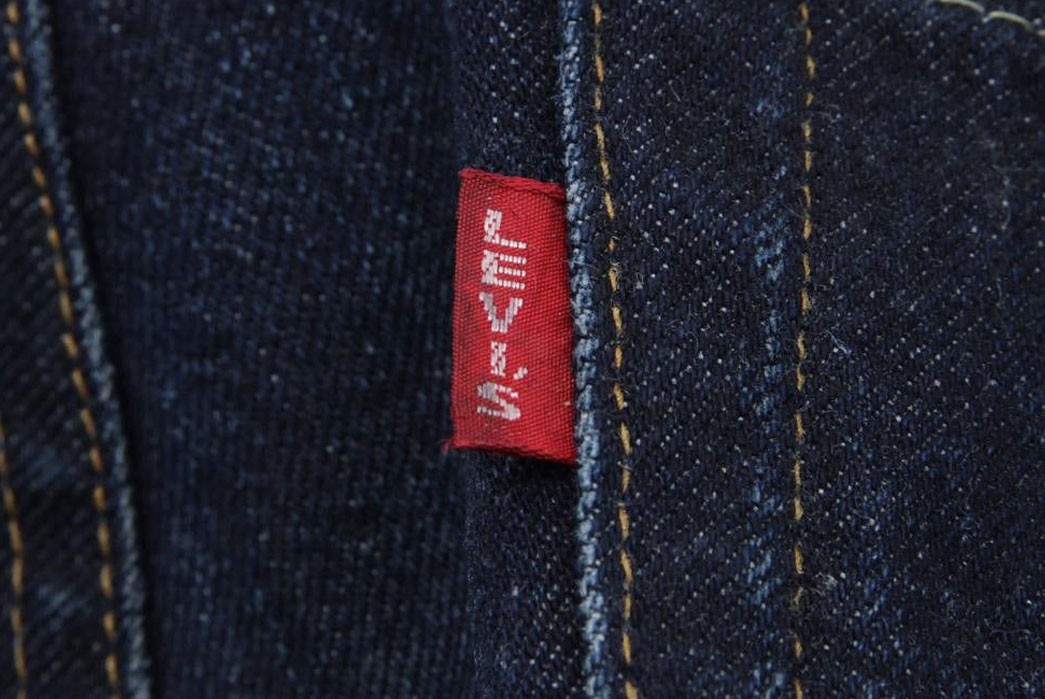
Big E red tab. Replaced with a lower case “e” in 1971.
This little red tag was introduced in 1936 to help Levi’s fight counterfeiters (although it’s ironically become a staple of repro brands since the late ’90s). The original red tab had a capitalized Big E “LEVI’S” but was amended to the lower case Little e “LeVI’S” in 1971. This distinction is one of the easiest ways to identify vintage Levi’s garments. The red tab can be found on the back right pocket of Levi’s jeans and on the left front pocket of their denim jackets.
The Two Horse Patch
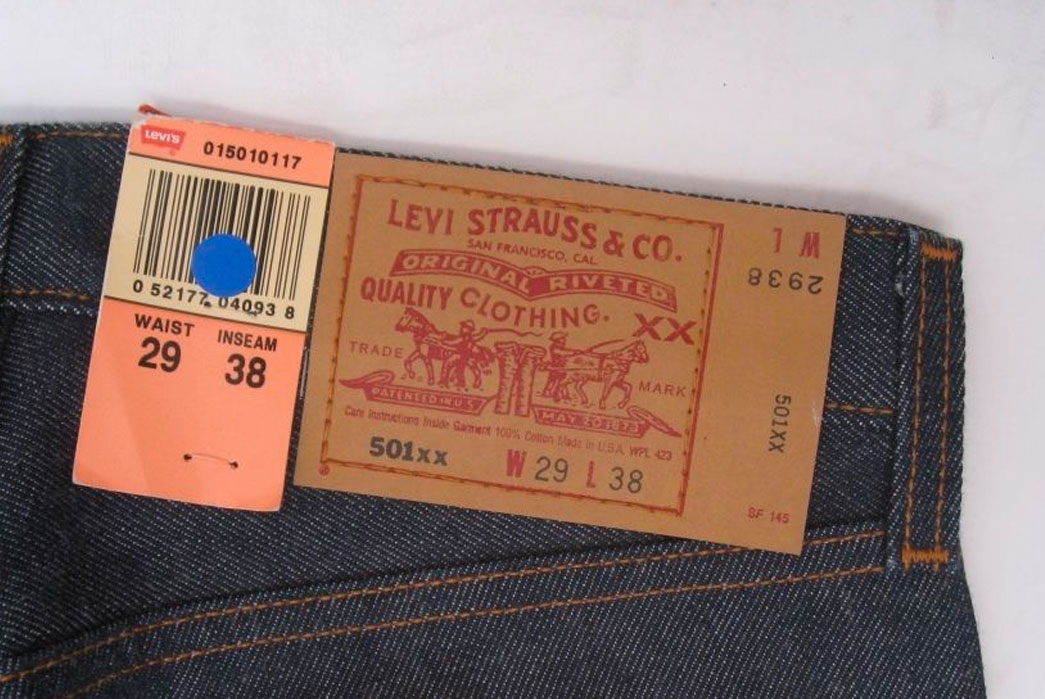
The design from the 1800s lives on, and really hasn’t changed much since its inception. It can be found on the waistband above the right pocket on Levi’s jeans and on the inside lining of jackets and outerwear.
The Arcuate
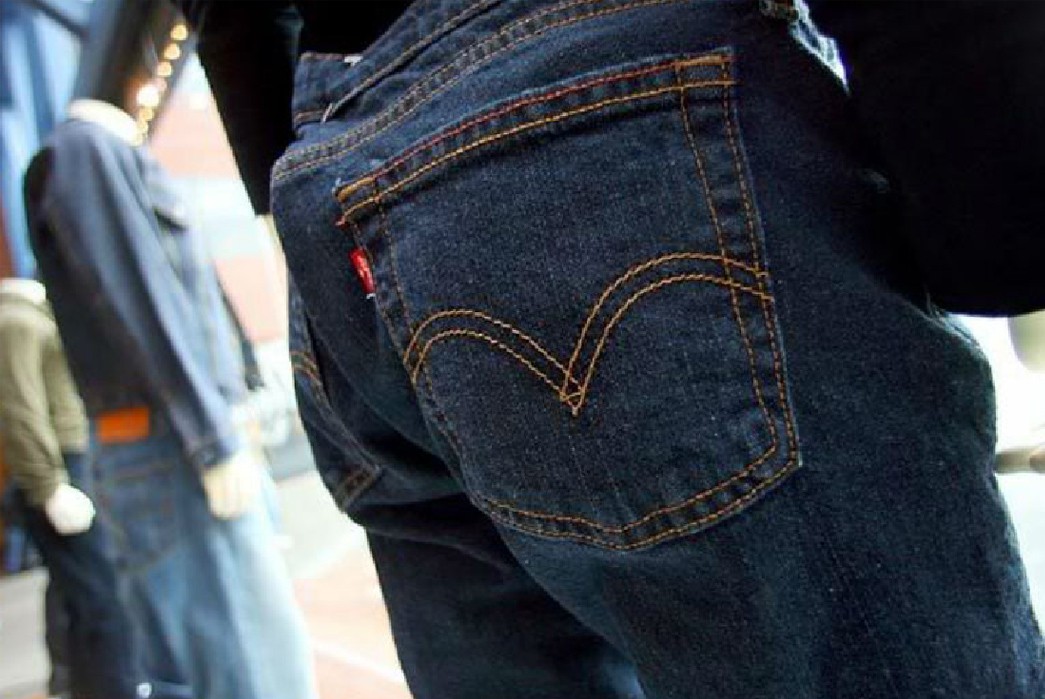
The winged arcuate has lived on the back pocket of Levi’s jeans since the earliest days of the company. Many have conjectured about its meaning but its true significance is one of those details that was probably lost in the 1906 fire.
Iconic Models
Levi’s 501 Shrink-to-Fit
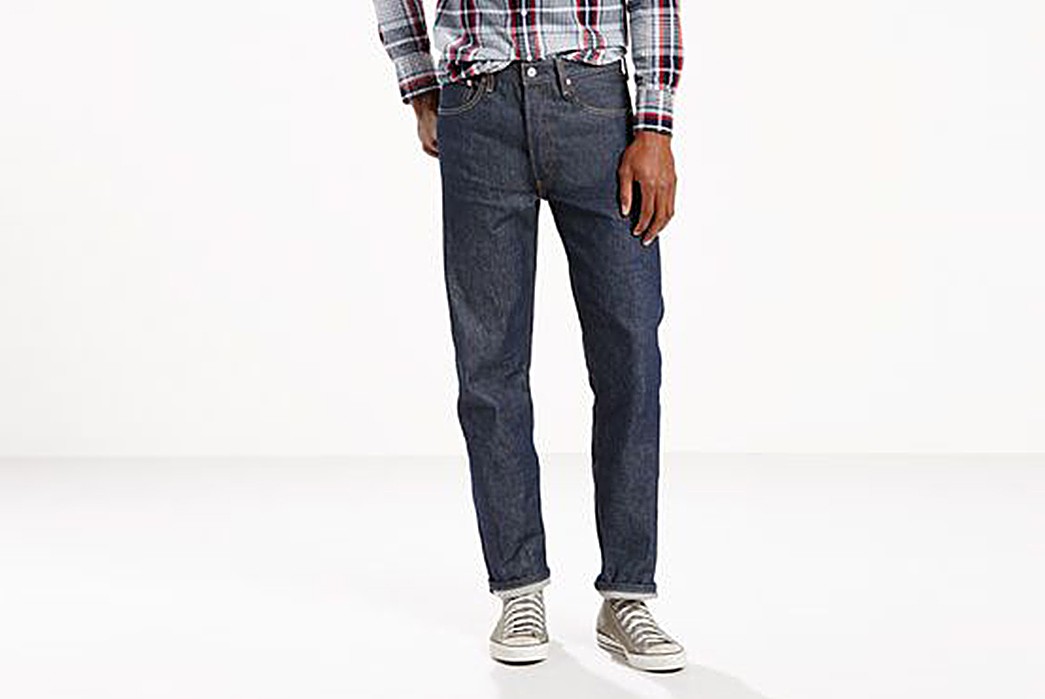
501 stf. Image via Levi Strauss & Co.
The 501 is a must-have. I repeat, a must-have. The quality has certainly changed since the glory days of the 1950s, but you’ll never be disappointed by a pair of 501s. Made from a raw, unsanforized denim, this is the perfect introduction to raw denim. With a mid-high rise and a straight leg, this is the essential 5 pocket jean and it can be found at pretty much any mall in America for less than 60 bucks.
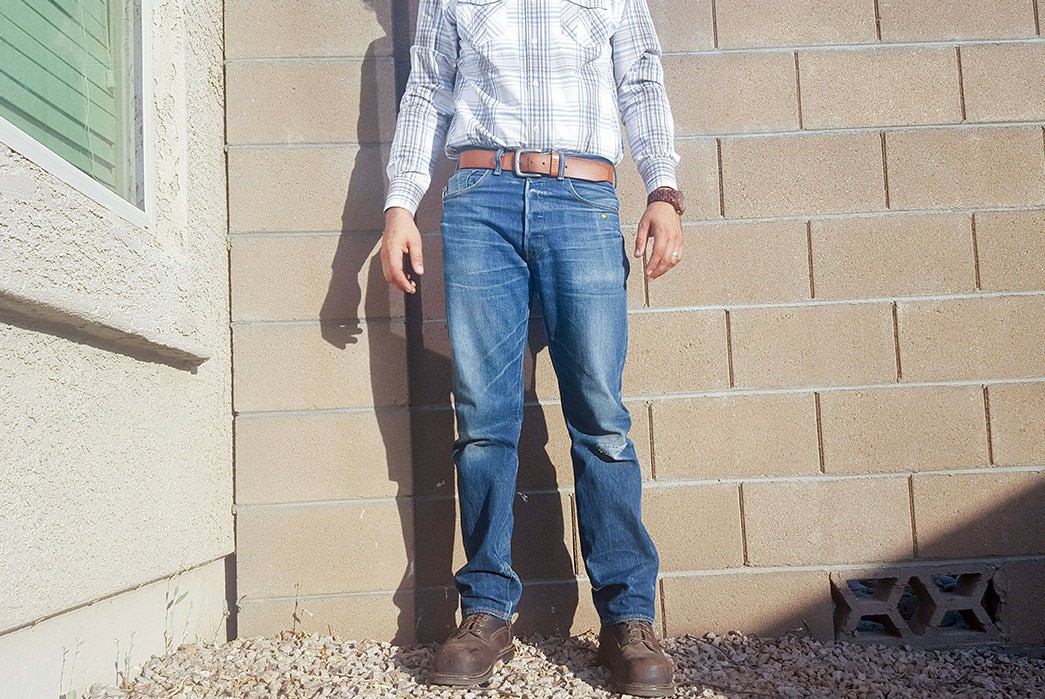
501 STF fades. Image via Heddels
This model is not made in the U.S., nor is it made from a selvedge denim—Levi’s offers their archival 501s through the Levi’s Vintage Clothing line—but even this entry-level model can glean incredible, no-nonsense fades, as seen above.
Available for $59 from Levi’s.
Type III Trucker Jacket
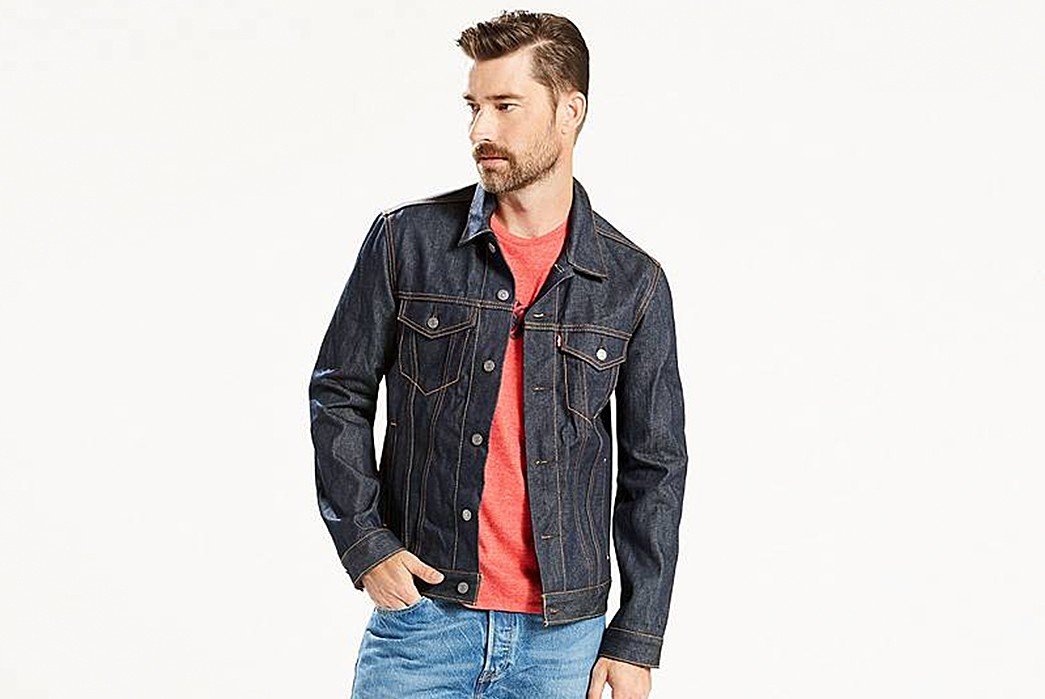
The trucker jacket, otherwise known as the Levi’s Type III, is the most commonly seen of the three famous Levi’s Jackets. Also available in rigid denim, this is another entry-level raw denim offering that can bring really good fades with hard work. Another absolute essential for any denim-head.
Available for $89 from Levi’s.
Sawtooth Western Shirt

The third in the Holy Trinity of Levi’s essentials is the Western Shirt. Levi’s trademark silhouette features the jagged “sawtooth” pockets with pearl snaps, and it’s available in a variety of different washes and, occasionally, in a raw form. Simple, rugged, and inexpensive, this is great entry-level denim shirt is always good to have on hand. And if you really like it, you can invest in the replica 1955 Sawtooth from LVC.
The entry-level version is available for $60 at Levi’s.

